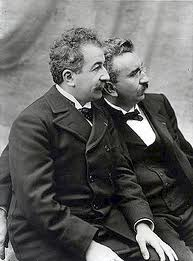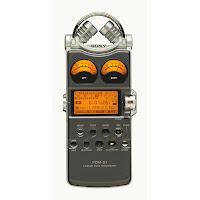In this blog i will run through the three main areas of editing.
- The Development of Editing
- The Purpose of Editing
- The Conventions and Techniques of Editing
The Development Of Editing
As film technology has evolved, editing has massively changed and developed as time has goes on.
History of Cinema-
Eadweard Muybridge is linked to the origins of cinema.
He was very interested in how things move such as humans and animals, he used a sequence of cameras to create an illusion of movement when played back. This is an example of the first one he did on a horse.
He realised that if you play back a series of images as fast as 24 images per second you are made to think that the subject is moving rather than it be a series of images.
When understanding the idea of both frames and frame rates, it is very important because you need to know how fast your frames are when played back to see whether it is going at the right speed or like normal, such as Eadweard Muybridge's horse example. We still use the idea of frame rate to adjust speed of timing in production and post production today. The first film cameras were a roll of film which moved frames mechanically past a shutter and lens system. These were invented in France by the Lumiere Brother and in America by Thomas Edison.
This is a picture of what the first film camera looked like:

 And this is a photograph of the Lumiere Brothers:
And this is a photograph of the Lumiere Brothers:The first few films made on these cameras werent edited as they were a one single shot from a single point of view. This means that there was no need to edit because each picture was taken from a different point of view slowly moving along, such as the horse had 24 images taken of the animal while running so their would have been a few cameras set up to take all the pictures.
When the the idea of using a variety of shot choices and use a multiple points of view and that the story could follow the action only came about the same time as the idea of editing in camera.
Editing In Camera- this means that the film is made by shot to shot in the camera. You can add the next shot in the story by filming it next.
This is still a way of creating films. This is an example found on www.straight8.net - this is a competition where filmmakers make an editied in camera movie on a single 8mm film cartridge and the first time they watch the film is infront of a huge audience at their film festivals.
http://www.straight8.net/watch.html - this is a video of a cyclist on the fireflies charity cycle ride from Genova to Cannes in 2008.
An example from 1902 is the History of an American Firefighter:
Editing in the camera allows film makers to do more than just show the world from one point of view but to show it from many different lights.
Editing
It is very hard to put together a finished film while editing in a camera, judging where each shot starts and finishes perfectly each time is really hard to get it the same each time. Early film makers needed an easy way to trim down shots and to alter the selection of clips. In the early days film makers used to cup up and tape back together the film which was how it was edited. This was done by hand for many years by using a pair of scissors and using a magnifying glass to get everything together perfectly, but this was rather time consuming.
Iwan Serrurier invented the first mechanical editing deck which was used to cut up and reassemble movies easier than doing it by hand in 1924. He was the founder of the Moviola Company.
This is over an hour long video about the history of Moviola:
The editing deck completely revolutionised editing and allowed an easier less time consuming more professional and sophisticated cutting techniques that could be developed.
The technique of cutting film and to bring together the pieces either done by hand or by using a machine is called 'Linear Editing'. This process is purely is purely mechanical and the reason why it is called linear editing is because you assemble each clip one after another to create the final film.
In 1920 until the end of the second world war, film editing was done on Moviola decks, then in 1945 the German company Steenbeck introduced their own machine, this then became the best industry standard machine to use.
Steenbeck still produce and sell film editing decks, the process of cutting film still goes on nowadays.
This is a video of someone on Youtube.com from 2009 using a Steenbeck.
Invention Of Video Editing
In 1951 the Ampex research team invented the video tape, this was the idea of recording something other than film. The first video editing machines came about a few years later in 1956, the VR-1000 was made, it was the first, practical and broadcast quality recorder which recorded in black and white with a mono audio channel on a 2" wide video tape. This tape ran at 15-inches per second. The pictures were recorded using a rotating drum across the tape from top to bottom. This gave the video a more professional look recording at a speed of 1560 inches per second.
The original video editing systems were a linear systems. However, instead of physically cutting the video take like you could do with film, the data on the tape was copied over from one tape to another using a control deck which would control the in and out points of the clip you copied across.
This was used primarily for TV usage, neither the picture quality or the editing were suitable for cinema use.
The first feature film shot on video was Julie and Julia in 1987:
The first commercial HD movie was shot in 2004, it was called Once Upon A Time in Mexico:
Non-Linear Editing Systems
In the 1970's the first attempt to create a non-linear editing system was made, but no one was able to bring a commercial system to the market. Lucasfilm started to develop a system in the 1980s with their EditDroid which was a system based on laser disc technology. This unfortunately never turned into a commercial system.
 However, the first commercially sucessful and professional non-linear systems were created in 1989, when Avid launched the Avid I Media composer editing system. the Avid system was a hardware and software system based on Apple computer technology. This was one of the first computer based systems that converted taped data into files which could then be moved about on a timeline. This was made easy by the creation of digital video cameras, the first professional camera, the Sony D1 which came onto the market in 1986.
However, the first commercially sucessful and professional non-linear systems were created in 1989, when Avid launched the Avid I Media composer editing system. the Avid system was a hardware and software system based on Apple computer technology. This was one of the first computer based systems that converted taped data into files which could then be moved about on a timeline. This was made easy by the creation of digital video cameras, the first professional camera, the Sony D1 which came onto the market in 1986.What allowed the change from linear to non-linear was that the idea of film and video could be transformed into digital files which could be then altered with out destroying the original file. This is known as Non Destructive Editing.
Once the images were digital, it became possible to alter and change the data in ways that were impossible when using linear editing systems like Steenbeck.
Purpose Of Editing
Story Telling
Whether its drama, mews or documentary the purpose of editing is all the same, by telling a story.
We do this by controlling the audience's point of view. The shots that we decide to shoot in production need to be exactly what we need to tell our story in the edit.
Genre is how a film is defined by either its content or style, there are many many genres, these are a few videos to show a few:
Horror:
This is a short film that I found on Youtube representing the genre horror.
RomCom (Romance & Comedy):
This was a trailer i found on Youtube of a film coming out soon.
Action & Drama:
This is the trailer from the film Drive, which is an action and drama.
Pace & Rhythm- Pace of cutting is used to control the tension in a scene. The more cuts per minute the faster the pace.
This is an example of a modern fast pace film:
This is an example of a short pace film:
The difference between the pace of each trailer is massive and you can tell that through the music played and also you can tell the genre of the film through the music and how fast paced they are.
Combining shots into sequences to engage the viewer-
In this scene of Lord Of The Rings there are so many short shots lasting no longer than 3 seconds, not including dialogue. These short shots are done to create drama and for the audience to not really know whats going to happen next.
Conventions And Techniques
Shot-Reverse-Shot - This is used mainly in dialogue, the way the point of view moves from the face of person to the reverse view of the person they are talking to, this is an example of shot-reverse-shot on youtube:
Montage - A montage sequence is used to show a characters development through time. This is an example i have found on Youtube where someone has recorded them selves playing basketball and them scoring through time.
How to cut up a clip by setting in and out points?
This is a print screen of the 'in and out points' i have taken on Final Cut Pro, while editing it is easy to drag certain or delete certain points with out actually deleting the footage as you can change it afterwards, you do this by pressing 'i' at the start and 'o' at the end.
How to make a dissolve transition between two clips?
This is a print screen i have taken on Final Cut Pro to show how you add a dissolve transition into two clips, you cut the clips on the time line at the bottom and find out where you exactly want it then go to effects then dissolve and choose which dissolve you want which will suit the video.
How to make a wipe transaction between two clips?
This is very similar to the dissolve transition, i have taken this print screen from Final Cut Pro to show how to add a wipe transition between two clips.
How to edit in a cut-away into an interview?
This is a print screen from Final Cut Pro that i have taken, it is an example of two clips been added together then you need to add a transition in the middle so they both cut together smoothly.
An example of cutting to a sound track!
While doing our VPA video for one of our assignments we were given a certain part of the song that each group had to make their video to, then we had to add each video to the part of the song we were given, the video needed to be the same tempo as the song whether it was fast or slow speed. Unfortunately I don't have an example of this as I don't have the file.





No comments:
Post a Comment